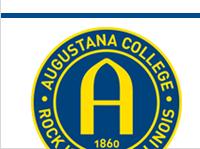Swedes in American Politics
Exhibit on view September 2016–January 2017
While early Swedish immigrants favored the Democrats, they later broke with the party over the issue of slavery. The Civil War served as the turning point that led Swedish Americans into the political and military activity of their new homeland. Around 3,000 Swedish immigrants served the Union cause. From then, Swedish Americans became enthusiastic supporters of the newly rising Republican Party and of Abraham Lincoln.
“Lincoln could not have been elected president but for the unanimity with which he was supported by the Scandinavians of the western states. The outcome of the presidential election in 1860 and again that of 1864 hung on a very small margin, and had the Swedes been less enlightened, less moral, less liberty-loving, they would likewise have been less zealous in their efforts to accomplish the election of Lincoln.”
--Ernst Olson “The Swedish Element in Illinois,” 1917
In the late 1800s, Swedish immigrants became a powerful force in local Republican politics in the Midwest, particularly in Minnesota and Illinois. In 1865, the first Swede was elected to Minnesota legislature, and in 1874 the first Swede was elected to Illinois legislature.
John Ericsson Republican League of Illinois
The John Ericsson Republican League of Illinois was organized in 1894. Its mission was to exert a Scandinavian-American influence on American politics and advance Scandinavian-Americans for political office.
For many years, Swedish-Americans voted, but did not politically organize or hold many political offices. Eventually, Swedish Americans formed political clubs in locations with large numbers of Swedish voters (including Chicago, Rockford, Galesburg, and Moline). From this, the idea of a statewide organization of Swedish-American voters was formed.
Why John Ericsson?
Every year, the League held a convention and banquet on or around March 9 in celebration of John Ericsson Day. This day was to honor Captain John Ericsson, Swedish-American engineer and inventor best known for his creation of the Union ironclad warship U.S.S. Monitor, which defeated the Confederate ironclad warship U.S.S. Merrimac in a naval battle on March 9, 1862. This battle was instrumental in securing a Union victory in the Civil War. The first League convention was held on March 9, 1895 in Chicago.
In the campaign of 1896, a committee from the League mailed out 7,300 letters, 789,975 books and campaign materials, and 700,000 copies of Swedish newspapers to strengthen Swedish-American loyalty to the Republican party.
Monitor News
The League endeavored to publish a small paper concerning its political interests. In 1895, it published the first, and only, issue of Monitor News.
Republican & Democratic Ideological Shift
It’s worth remembering here that the Republican Party did not always favor smaller government, as it does today. In the mid-1800s, the Republican Party formed in the North out of opposition to slavery and stood for expanded government politics like increased spending on railroads and state universities, while Democrats (the Confederates during the Civil War) favored limited government.
Somewhere between about 1872 and 1936, Democratic and Republican ideologies shifted. Republicans opposed Franklin Delano Roosevelt’s New Deal and Democrats wanted to win new Western votes. Both parties tried to entice Western votes with federal support, a position which stuck with the Democrats. Meanwhile Republicans began favoring non-intervention by the federal government, favoring big business. Republicans have always favored big business; however, in the early days businesses wanted expanded government and today they do not.
Beyond Republicanism
Not all Swedish Americans were Republicans, of course. Many immigrants, who arrived later especially, were influenced by the socialist movement in Sweden. Swedish-American socialists formed their own organizations and newspapers, or partnered with American socialist groups. Most notable was Joe Hill (known as Joel Hägglund in Sweden), a labor activist, cartoonist, and songwriter who led the Industrial Workers of the World international labor union. While socialism was a minority movement among Swedish Americans, it illustrates the Swedes’ favor for progressive social reforms in American politics.
After World War I, many Scandinavians in Minnesota left the Republican Party for the new Farmer-Labor Party. This party was a coalition of agrarian and labor organizations that sought to balance workers’ wages with increasing retail prices.
Later, many Swedes left the Republican Party in 1932 to vote for Franklin D. Roosevelt in the presidential election. Many supported his New Deal program for economic recovery, and remained in the Democratic Party since then.
President Taft
At the League’s annual banquets, prominent politicians gathered to socialize and discuss key issues of the times. Leading Republicans have attended League banquets, including President William Howard Taft in 1912. This was during Taft’s campaign for a second term (which he later lost to Woodrow Wilson) and he used this stage to make many of his campaign views known.
Did you know?
The Supreme Court of the United States has had two Swedish-American chief justices: Earl Warren and William Rehnquist.
Sources
I/O:21 John Ericsson Republican League of Illinois records
MSS P:339 Scandinavian American Portrait Collection
MSS P:6 G.N. Swan papers
“The Swedish Element in Illinois survey of the past seven decades,” Ernst W. Olson. Chicago: Swedish-American Biographical Association, 1917.
“Swedes in North America, 1638-1988 : technical, cultural, and political achievements,” Sten Carlsson. Stocholm, Streiffert, 1988.
“Americans of Swedish descent: how they live and work,” edited by Gösta Nyblom. Rock Island, G. Nyblom Publishing House, 1948.
















